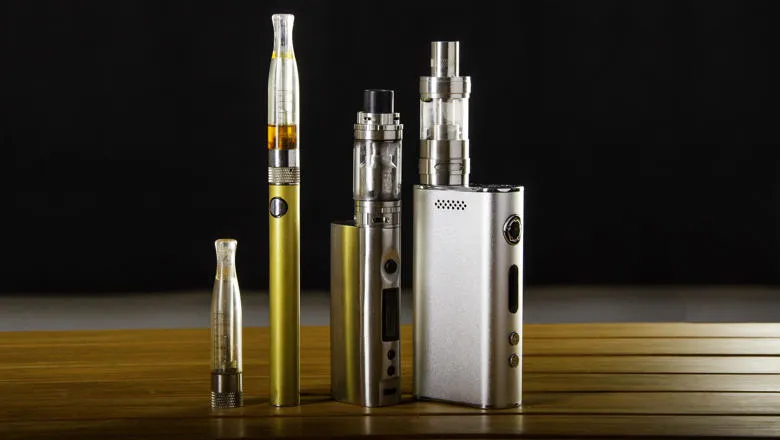New research from the Institute of Psychiatry, Psychology & Neuroscience (IoPPN) at King's College London and Action on Smoking and Health has found that standardising e-cigarette (vape) packaging, by removing brand imagery, is associated with a decrease in vapes appeal among teenagers.

The research, published in JAMA Network Open, is the first major study into how packaging effects appeal of vaping to teenagers as well as adults, and suggests that regulating packaging could be an effective means of stopping young people from using vapes without lessening the appeal of vaping to adults who smoke.
2,469 teenagers aged 11-18 and 12,026 adults aged 18 and over were randomly assigned to view a set of three vape products from one of three packaging conditions – fully branded packs (acting as the control), standardised white packaging with brand name, and standardised green packaging with brand name. They were then asked which of the products would be of most interest to try.
Researchers found that those in the teenage group were more likely to report that their peers would have no interest in vapes when marketed in standardized packaging. This was in contrast to the adult group, whose interest in using vapes was not reduced by the standardisation of packaging.
Vapes, and nicotine products in general, should be available to adults who smoke to help them to stop smoking but should not be used by non-smokers under the age of 18. Some current e-cigarette packaging has eye catching and enticing designs. Our study found that removing brand imagery from packs reduced appeal of vapes to teenagers without reducing appeal to adults. This is a vital difference, as it means that vapes can still appeal to adults as a tool to stop smoking, particularly because our previous research has established vaping is significantly less harmful than smoking.– Dr Katherine East, Research Associate at King's IoPPN and the study's senior author
Researchers also found that a greater proportion of teenagers who had never smoked or vaped perceived no interest among people their age in trying any of the products shown in standardised packaging, suggesting that removing brand imagery could deter teenagers from taking up vaping in the first place. Importantly, standardisation of packaging did not affect interest in trying vapes among adults who smoke, suggesting that policy to reduce branding elements would not deter this group from trying vapes to stop smoking.
Britain has seen a rise in the number of teenagers using vapes for the first time. While there are a number of steps that policy makers can take, the ideal situation is to ensure teenagers aren't tempted to take up vaping in the first place, whilst not deterring adults from using vapes to stop smoking. Our study suggests that removing brand imagery could be a means of doing that.– Eve Taylor, Research Assistant at King's IoPPN and the study's first author
In Great Britain in 2022, 8.3% of adults and 7% of teenagers aged 11-17 reported current vape use – a rise of 3.7% in teens since 2021. While vapes have been shown to help people quit smoking, they are not designed for use by those that have never smoked.
Deborah Arnott, Chief Executive Officer at Action on Smoking and Health said, "This research shows that it's possible to make vape packaging less attractive to children, without undermining the appeal of e-cigarettes to adult smokers trying to quit. This is an important finding given the concerning rise in underage vaping in recent times. The government should take note and commit to implementing standardised packaging for vapes and vaping products without delay."
This study was supported by a Project Grant from Cancer Research UK.
Interest in Trying E-Cigarettes with Branded and Standardised Packaging Among Youth and Adults in Great Britain (DOI:10.1001/Jamanetworkopen.2023.1799) (Eve Taylor, Deborah Arnott, Hazel Cheeseman, David Hammond, Jessica L. Reid, Ann McNeill, Pete Driezen, Katherine East) was published in Jama Network Open.






